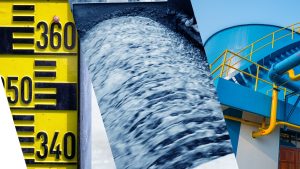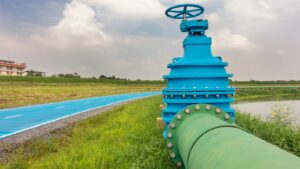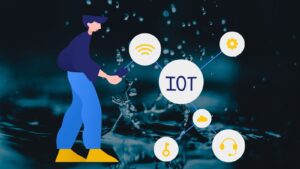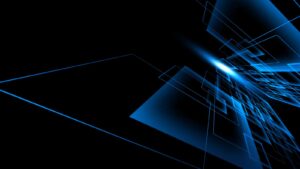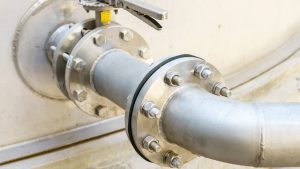The quality of our water is under threat: not only got drinking but the water that flows through our oceans to support marine life, fishing and aquaculture industry and in coastal communities around ports where stormwater flow is a major issue. National land management, irrigation practices, waste practices, and increasing concentration of chemicals are all factors impacting contemporary groundwater quality, resulting in pollution like a chemical threat. Water pollution levels are a threat to our health and our environment. Monitoring water quality is important: in our seas, rivers, on the surface and in our ports, for both companies and the public. It enables us to assess how they are changing, analyse trends and inform plans and strategies that improve water quality and ensure that water meets its designated use. A Smart technology that water monitoring systems rely on is water quality sensors, which serve useful for water managers. This article will discuss the 10 types of water quality sensors water managers rely on.
10 Types of Water Quality Sensors
Conductivity Sensors
Conductivity is one of the key indications used in water quality sensors to represent water quality. The conductivity is better, and the TDS value in the water is higher when the conductivity value is higher. The amount of dissolved contaminants in the water is indicated by the TDS value. The amount of impurities in the water increases as the TDS value rises. On the other hand, water quality increases as the pollutant content decrease. The more pure, the less conductivity.
Residual Chlorine Sensors
The phrase “residual chlorine” refers to the mixed and free chlorine that is still present in water following chlorinated treatment and contact for a specific amount of time. Water quality monitors frequently contain residual chlorine. Measurements of ozone, chlorine dioxide, and residual chlorine in water are made using a residual chlorine sensor. The electrode structure is straightforward, tidy, and simple to replace. It can be used in initiatives to improve water quality, canning facilities, drinking water distribution systems, swimming pools, cooling circulating water, and other settings where it’s necessary to continuously check the amount of residual chlorine in an aqueous solution.
Dissolved Oxygen Sensors
One type of sensor for determining the amount of dissolved oxygen in a solution is a dissolved oxygen sensor. It uses the fluorescence measurement principle. The fluorescent dissolved oxygen sensor doesn’t use oxygen and doesn’t need electrolytes because it is based on the quenching principle of active fluorescence by particular chemicals in physics. Seawater and freshwater are the two categories. It is appropriate for situations requiring long-term monitoring and inconvenient maintenance, such as monitoring industrial water quality, aquaculture, and river and lake saltwater quality parameters.
ORP Sensors
An important indication of the water quality in aquaculture waters is the oxidation-reduction potential (ORP), and the ORP value might indicate the water’s quality. The water body’s oxidation-reduction condition can be seen in the oxidation-reduction potential. The oxidising and reducing properties of a body of water are inversely correlated; the bigger the ORP number, the stronger the oxidising property. The oxygen reduction potential of the solution is mostly determined by the ORP sensor. The ORP data in the soil and culture medium can also be detected in addition to the water body. As a result, it is also a sensor with a wide range of uses, particularly in chemical and electric engineering. Water quality is continuously monitored for ORP in sectors like food, medicine, and environmental protection. Typically, a pH sensor will be paired with it.
Ammonia Nitrogen Ion Sensor
In aquaculture, excessive levels of ammonia nitrogen in the water will kill fish and shrimp and result in their death. The water-quality ammonia hydrogen sensor is extremely important for monitoring the ammonia nitrogen concentration. The IoT, intelligent agriculture, and other fields frequently utilise the ammonia nitrogen sensor to measure the ammonia nitrogen content of water quality. An ammonium ion selective electrode built on a PVC membrane makes up the ammonia nitrogen sensor. It is used to determine the number of ammonium ions in water to make the test quicker, easier, more precise, and affordable.
Chlorophyll Sensor
Chlorophyll levels in the water are a good indicator of phytoplankton concentration. Eutrophication of the water can be determined by monitoring the amount of chlorophyll in the water. The top-of-the-line optical technology is used by the chlorophyll sensor, which also contains an automatic cleaning brush at the bottom for self-cleaning. All-in-one construction, steady transmitter, high-efficiency power management, and maintenance- and calibration-free construction. It may be measured in the environment for a very long time. All algae include chlorophyll a, which is one of the essential elements of algae. The amount of chlorophyll is correlated with the water environment’s quality. So, measuring the amount of chlorophyll in water can provide insight into its quality. Algae and phytoplankton conditions in rivers, lakes, ponds, oceans and farming environments can be easily measured using chlorophyll sensors.
Blue-green Algae Sensor
Compared with the traditional manual counting method, the blue-green algae sensor adopts the principle of the fluorescence method, which is more efficient and fast and can be monitored online in real-time. The sensor has better repeatability and stability. With an automatic cleaning brush, it can eliminate air bubbles and reduce the impact of contamination on the measurement. Long service life and use in harsh environments can maintain excellent stability. It can play an early warning role in the reproduction of algae. The blue-green algae sensors are widely used in water environment monitoring, such as river sections, lakes and reservoirs, and near coasts. It is the best choice for monitoring phytoplankton, algal growth, water eutrophication, early warning of algal blooms, and studying water ecosystems.
TOC Sensor
The parameter total organic carbon (TOC) is crucial for determining water quality. It serves both as a direct indicator and a stand-in for many water quality applications. TOC analysers and TOC sensors are the two types of TOC measuring equipment that are currently on the market. Instrument accuracy is crucial if the planned usage involves regulatory reporting, maintaining a significant process control variable, real-time release, or other crucial product features. If broad TOC monitoring rather than making crucial quality decisions is the planned application, then other qualities could be more significant than accuracy. Sensors are frequently employed to keep an eye on a process, and the information they gather is exclusively used for informational purposes.
COD Sensors
Chemical oxygen demand, or COD, is the amount of oxidation that is consumed when water samples are treated with a specific, powerful oxidant under specific circumstances. The level of material pollution in the water is reflected by it. The severity of organic pollution increases with the level of the chemical oxygen demand. Water-dissolved organic materials commonly absorb UV light. Therefore, the concentration of dissolved organic contaminants in water can be precisely quantified by measuring the degree of UV light absorption by these organic molecules. One ultraviolet light is used to measure the COD content in the water, and the other reference light is used to measure the turbidity of the water body. The COD sensor uses two light sources, and the attenuation of the light path is compensated by a specific algorithm, which can be used to some extent. Remove particle-suspended matter contaminants from the measuring process to increase measurement stability and accuracy.
Turbidity Sensors
Turbidity is caused by suspended particles in the water. The suspended particles diffusely reflect the incident light. Usually, the scattered light in the direction of 90 degrees is used as the test signal. The scattered light and turbidity conform to a multi-segment linear relationship, so the sensor needs to be calibrated at multiple points. The turbidity sensor is designed and manufactured using the principle of scattered light turbidity measurement. Accurately measure the amount of light passing through the water to accurately measure the suspended solids in the water, and these suspended solids can reflect the pollution of the water body. In this way, the turbidity in the water sample is measured, and the final value is output after linearisation processing. It is often used in the accurate measurement of rivers, sewage, and wastewater by water quality detectors.
Make Decisions With Greater Confidence
There is a tendency to believe that water is safe for humans once water quality sensors are inserted into the water system. This is a false belief to base decisions. For one, the performance of sensors may deteriorate if not appropriately maintained. Secondly, when they are not infused with the data analytics collected by industry 4.0 technology, the precision in such measurements may not always be accurate. However, depending on a powerful software solution suite, you can make decisions on distributing treated water with much confidence. Tigernix, in that regard, has acquired respect as a brand trusted by municipal councils and utility service providers in Australia and around the world. Invest in a solution that guarantees higher safety levels for humans and the environment with a water asset solution.

